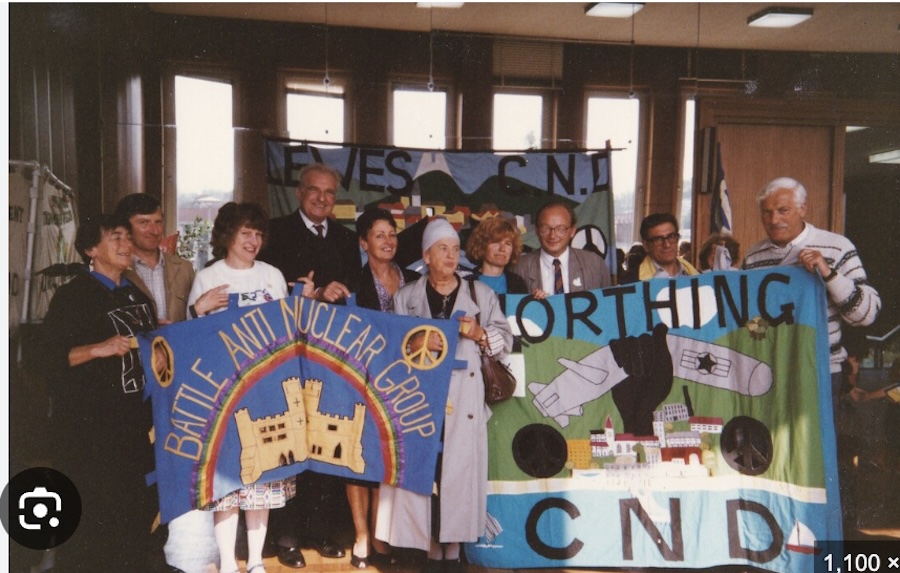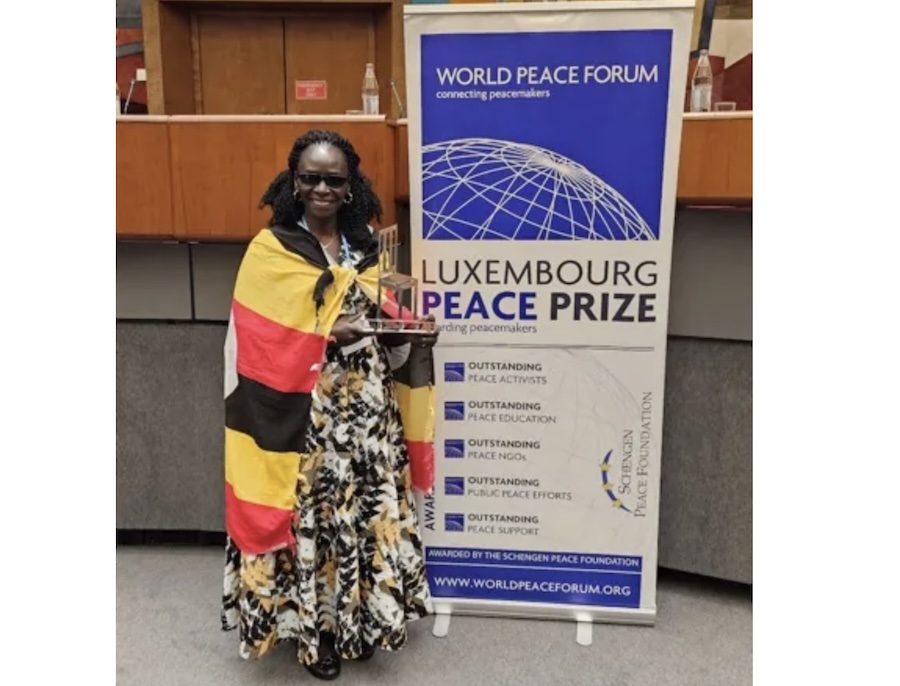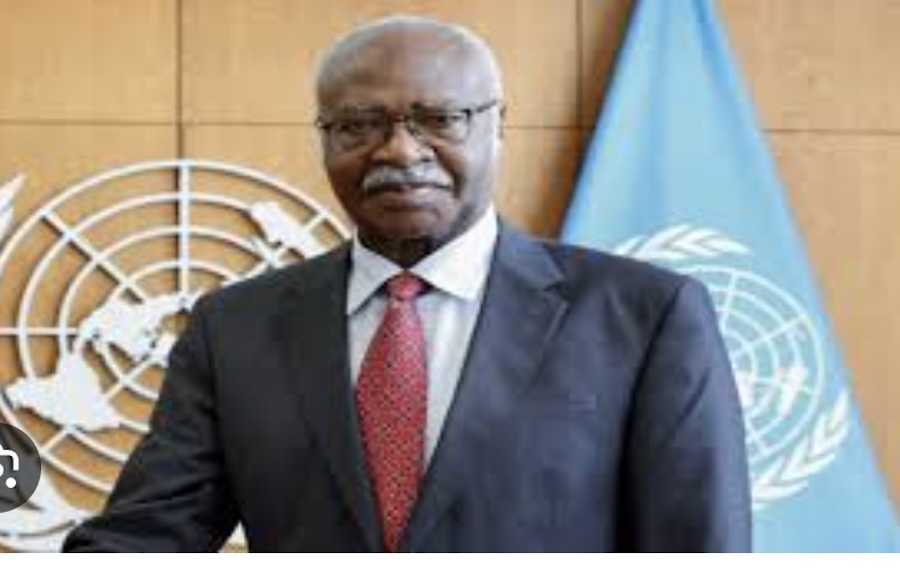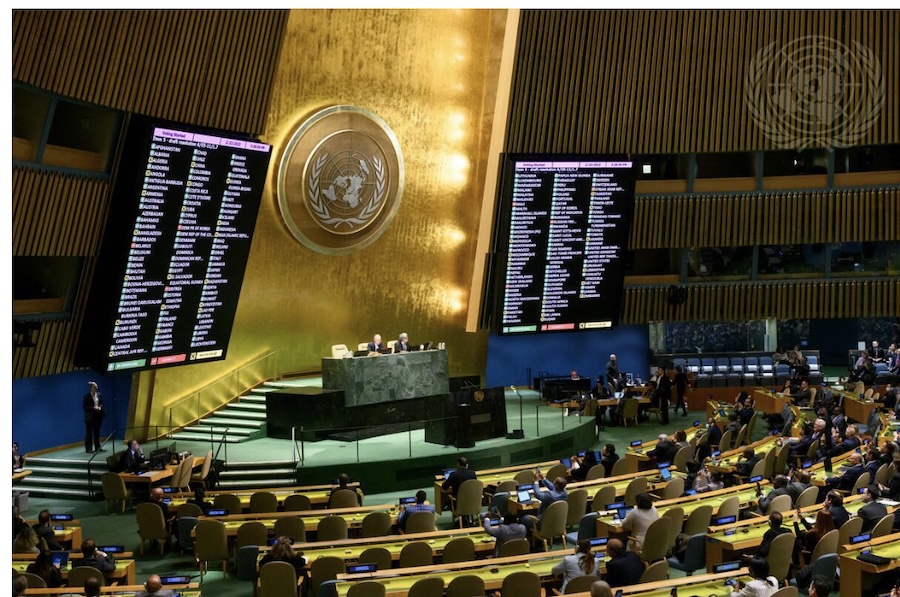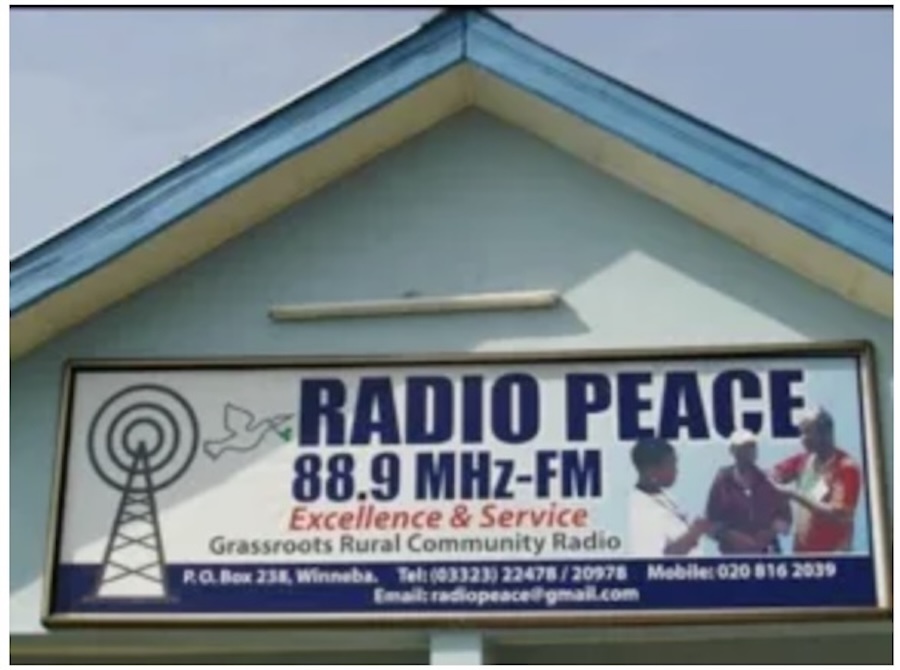FREE FLOW OF INFORMATION .
An article from DH net (translated from French by the Google translator)
Nearly 200 Belgian cities and towns will raise the peace flag from September 21 to 28, the Belgian Coalition Against Nuclear Weapons announced Friday. Launched on the occasion of the UN International Day of Peace, this action aims to oppose the presence of nuclear weapons in Belgium, and in the world in general.
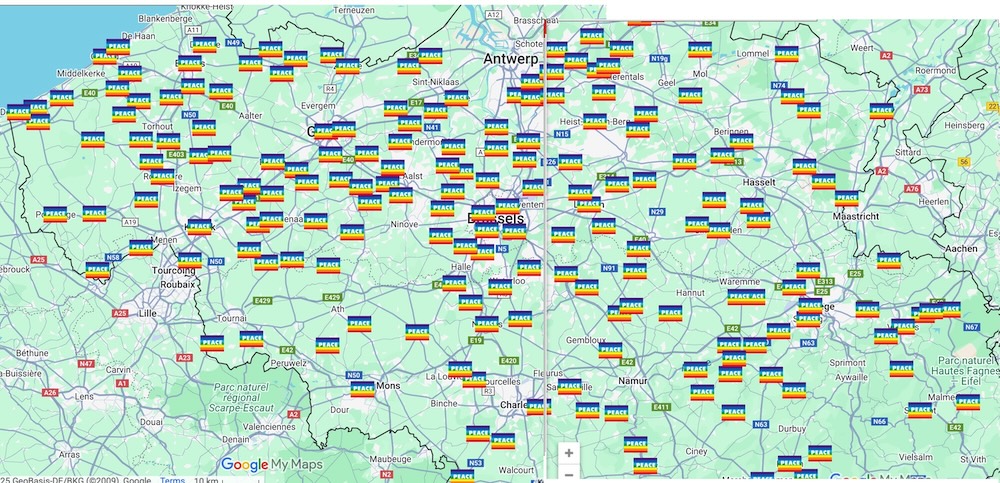
(Click on image to enlarge)
Nearly 200 Belgian cities and towns will raise the peace flag from September 21 to 28, the Belgian Coalition Against Nuclear Weapons announced Friday. Launched on the occasion of the UN International Day of Peace, this action aims to oppose the presence of nuclear weapons in Belgium, and in the world in general.
“Since 1963, Belgium has housed around twenty US nuclear bombs on its territory,” the coalition points out. “Moreover, the nuclear warheads at Kleine Brogel have recently been replaced by the new, more easily deployable B61-12 bombs.” According to the coalition, this makes Belgium a “prime potential target in the event of war.”
The organization also deplores the fact that Belgium has neither signed nor ratified the United Nations Treaty on the Prohibition of Nuclear Weapons (TPNW), which entered into force in 2021 and has been ratified by 73 countries. “By raising the flag of peace, cities and municipalities oppose the presence of American nuclear weapons on Belgian soil and call on the federal government to play an active role in international nuclear disarmament,” it states.
This year’s campaign takes on particular symbolism, as 2025 marks the 80th anniversary of the atomic bombings of Hiroshima and Nagasaki. The coalition adds that nuclear disarmament is “more necessary than ever in the current context of increasing militarization and a considerable increase in military spending, both in Belgium and Europe, as well as in the rest of the world.”
(article continued in right column)
What is happening for the International Day of Peace?
(article continued from left column)
(Editor’s note: The following list of participating cities and municipalities comes from the website of Journée de la Paix
Alken – Alost – Amay – Andenne – Anhée – Antoing – Anzegem – Arlon – Asse – Assenede – Auderghem – Avelgem – Awans – Baelen – Bastogne – Beaumont – Beernem – Beersel – Belœil – Berlaar – Bertrix – Bierbeek – Boechout – Braine-l’Alleud – Bredene – Brugelette – Bruges – Brunehaut – Buggenhout – Chapelle-lez-Herlaimont – Châtelet – Chaumont-Gistoux – Coxyde – Comines-Warneton – Courtrai – Damme – Deinze – Dessel – Destelbergen – Diest – Diksmuide – Dinant – Donceel – Eeklo – Engis – Erezée – Erpe-Mere – Estaimpuis – Étalle – Eupen – Evere – Everghem – Faimes – Flobecq – Florenville – Forest – Fosses-la-Ville – Furnes – Gand – Gavre – Geetbets – Genappe – Genk – Gistel – Grobbendonk – Haacht – Haaltert – Habay – Hamme – Ham-sur-Heure-Nalinnes – Hastière – Havelange – Heist-op-den-Berg – Herent – Herenthout – Herselt – Herzele – Heusden-Zolder – Hoegaarden – Holsbeek – Hooglede – Horebeke – Hotton – Huldenberg – Huy – Ichtegem – Ieper – Ittre – Jemeppe-sur-Sambre – Jodoigne – Juprelle – Kapelle-op-den-Bos – Kaprijke – Koekelare – Kontich – Kortemark – Kruisem – La Bruyère – La Hulpe – La Panne – Lanaken – Léau – Leeuw-Saint-Pierre – Lede – Lennik – Libramont-Chevigny – Lichtervelde – Lierde – Lierre – Lille – Limbourg – Lint – Lokeren – Lummen – Maaseik – Maldegem – Malines – Manage – Marche-en-Famenne – Marchin – Meerhout – Meise – Merchtem – Merelbeke-Melle – Merksplas – Mettet – Molenbeek-Saint-Jean – Momignies – Mont-de-l’Enclus – Moorslede – Mouscron – Nazareth-La Pinte – Nieuport – Nivelles – Ohey – Oostende – Oosterzele – Oostkamp – Opwijk – Oudenburg – Oudsbergen – Ouffet – Peer – Pelt – Pepinster – Perwez – Pittem – Poperinge – Profondeville – Putte – Quaregnon – Ramillies – Ranst – Rendeux – Ronse –Roulers – Rouvroy – Rumes – Saint-Laurent – Saint-Léger – Saint-Nicolas – Saint-Trond – Sambreville – Schilde – Seraing – Sint-Gillis-Waas – Sint-Lievens-Houtem – Soignies – Soumagne – Spa – Stavelot – Stekene – Steenokkerzeel – Temse – Ternat – Thuin – Tielt – Tielt-Winge – Tinlot – Tintigny – Tubize – Turnhout – Verviers – Viroinval – Virton – Voeren – Vorselaar – Vosselaar – Waimes – Waregem – Wanze – Wasseiges – Wavre – Wellen – Wervik – Westerlo – Wetteren – Wielsbeke – Willebroek – Wingene – Wortegem-Petegem – Zandhoven – Zedelgem – Zele – Zelzate – Zemst – Zoersel – Zulte – Zutendaal
– – – – – –
If you wish to make a comment on this article, you may write to coordinator@cpnn-world.org with the title “Comment on (name of article)” and we will put your comment on line. Because of the flood of spam, we have discontinued the direct application of comments.



